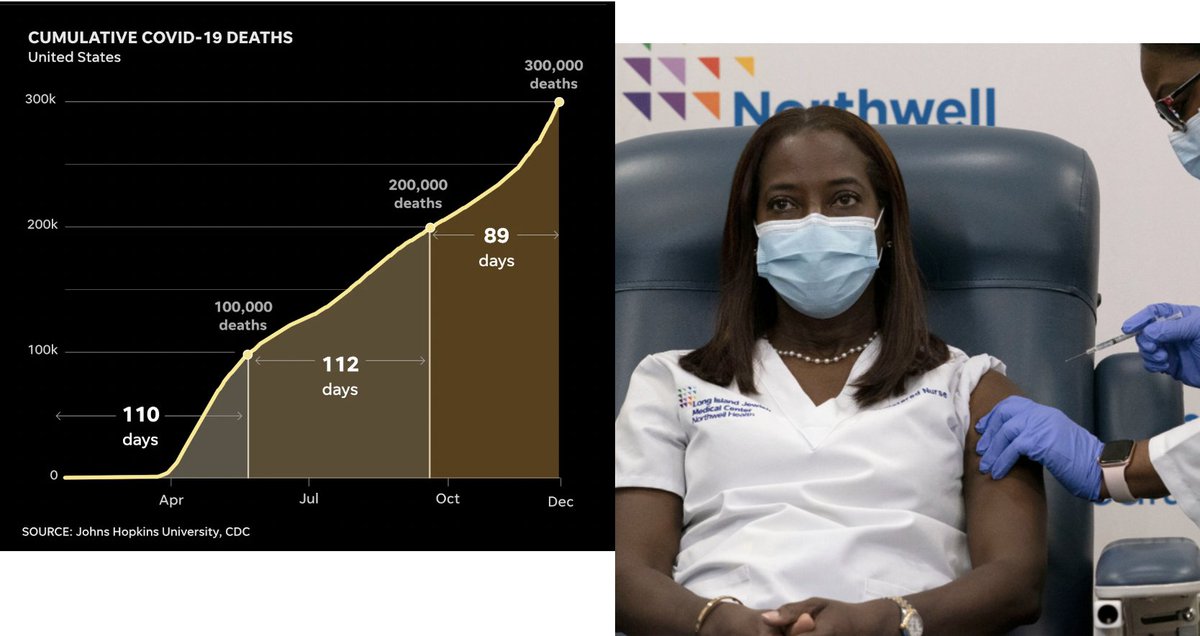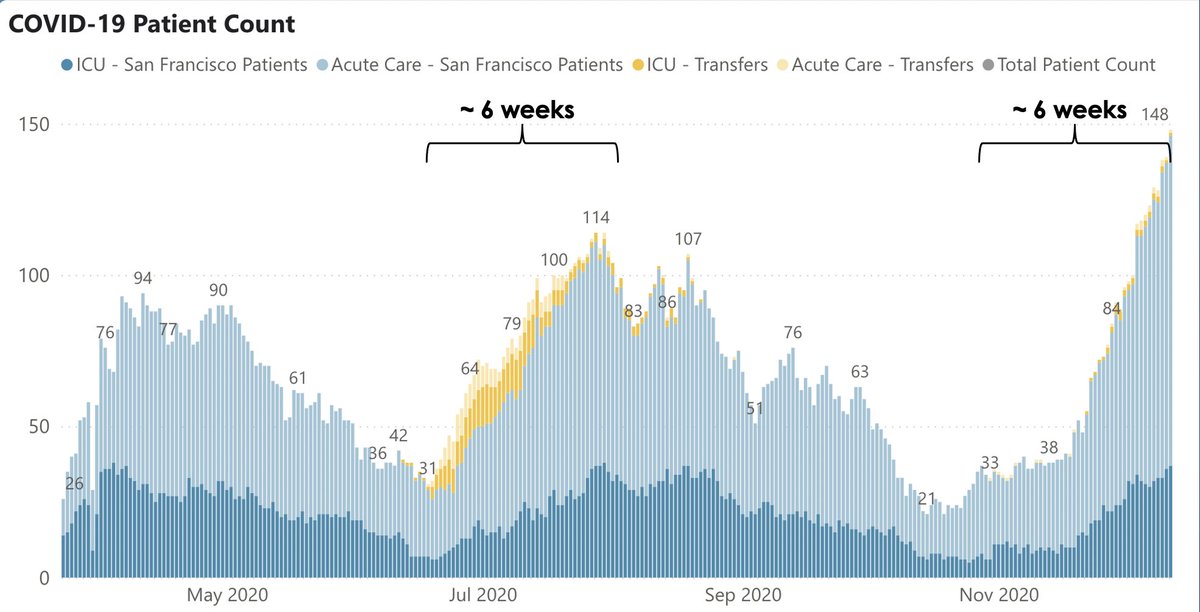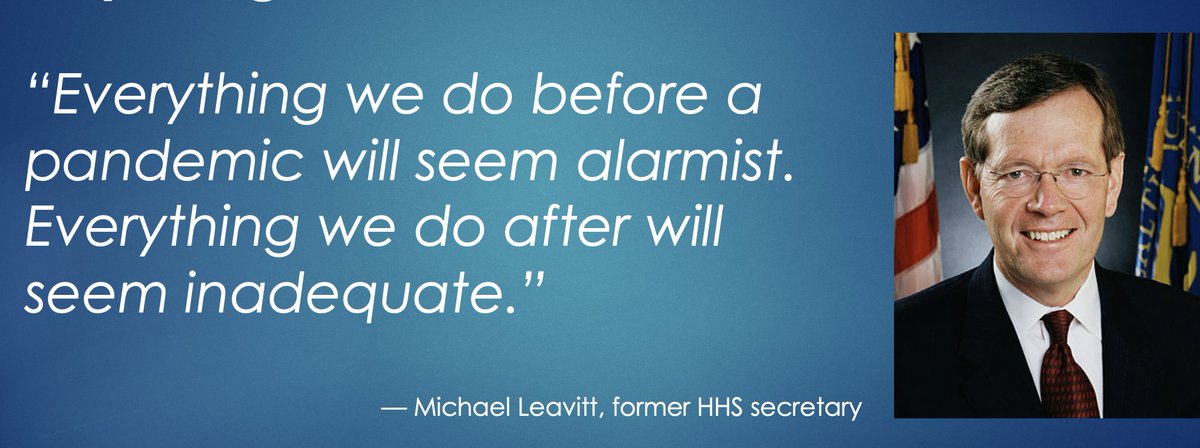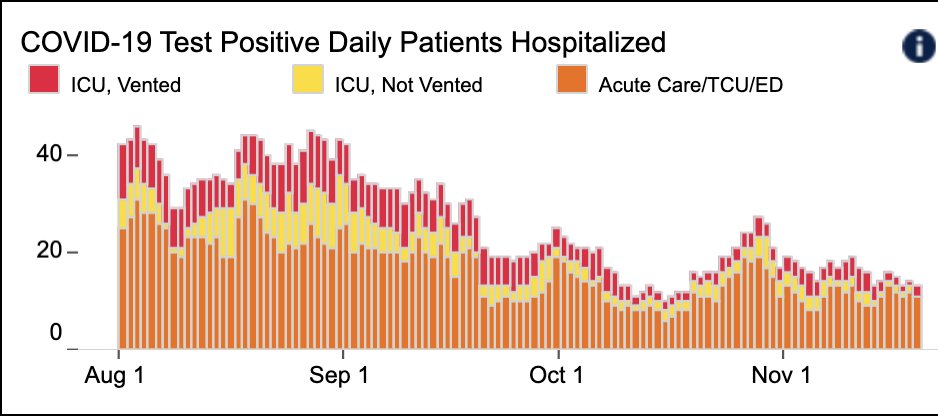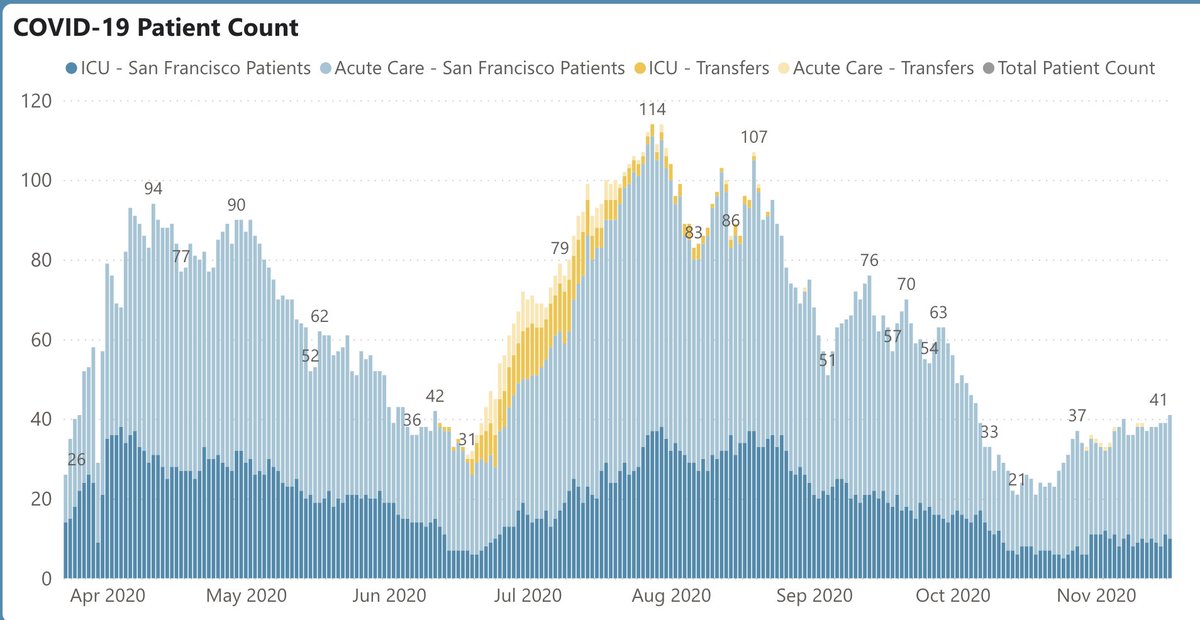
1/ Covid (@UCSF) Chronicles, Day 268
Today was Pfizer Vaccine Day @US_FDA, and the expert panel just recommended EUA approval tinyurl.com/y5u84jmx Next: FDA deliberates, but expect an EUA in next 1-2 days. As with All-Things-Covid, nothing is easy; now the hard part begins.
Today was Pfizer Vaccine Day @US_FDA, and the expert panel just recommended EUA approval tinyurl.com/y5u84jmx Next: FDA deliberates, but expect an EUA in next 1-2 days. As with All-Things-Covid, nothing is easy; now the hard part begins.
2/ Today: quick state of the pandemic, then potpourri of vaccine-related stuff.
SF still in our first true surge. @ucsfhospitals 39 Covid pts, 10 on vents (Fig). Test pos 11.9% in symptomatic pts, 1.6 in asymptomatics, both way up. In SF, cases now 181/d (vs ~30/d last mth)…
SF still in our first true surge. @ucsfhospitals 39 Covid pts, 10 on vents (Fig). Test pos 11.9% in symptomatic pts, 1.6 in asymptomatics, both way up. In SF, cases now 181/d (vs ~30/d last mth)…

3/ …& 129 Covid pts in SF hospitals (vs ~25 last mth; Fig). Luckily, deaths have not yet ticked up: 165, still lowest rate in U.S. But with this many people in ICUs, more deaths can’t be far behind. SF test positivity rate is 3.4%, rising but still well below CA’s rate of 8.8%. 

4/ Nationally: surges everywhere. Midwest cooled a bit but now heating up again (Fig). Any Thanksgiving effect should be evident by now – yet curves haven’t changed much. I think we ARE seeing an effect: 6-8 wks into a surge, media coverage, stern warnings by health officials... 

5/ …& various flavors of shutdown would normally result in sharp fall in cases/hospitalizations. The fact that our surges are continuing unabated is due to Thxgiving. Expect same for X-mas; it might not cause a "surge" but will prevent the current one from ending before January.
6/ Now to vaccines: so much to chew on! @NEJM fig below is striking: it shows not only the breathtaking effectiveness of Pfizer vaccine, but also that vaccine starts working ~10d after first dose. Expect a lot of talk re: if this means that a one-dose vaccine regimen would be OK. 
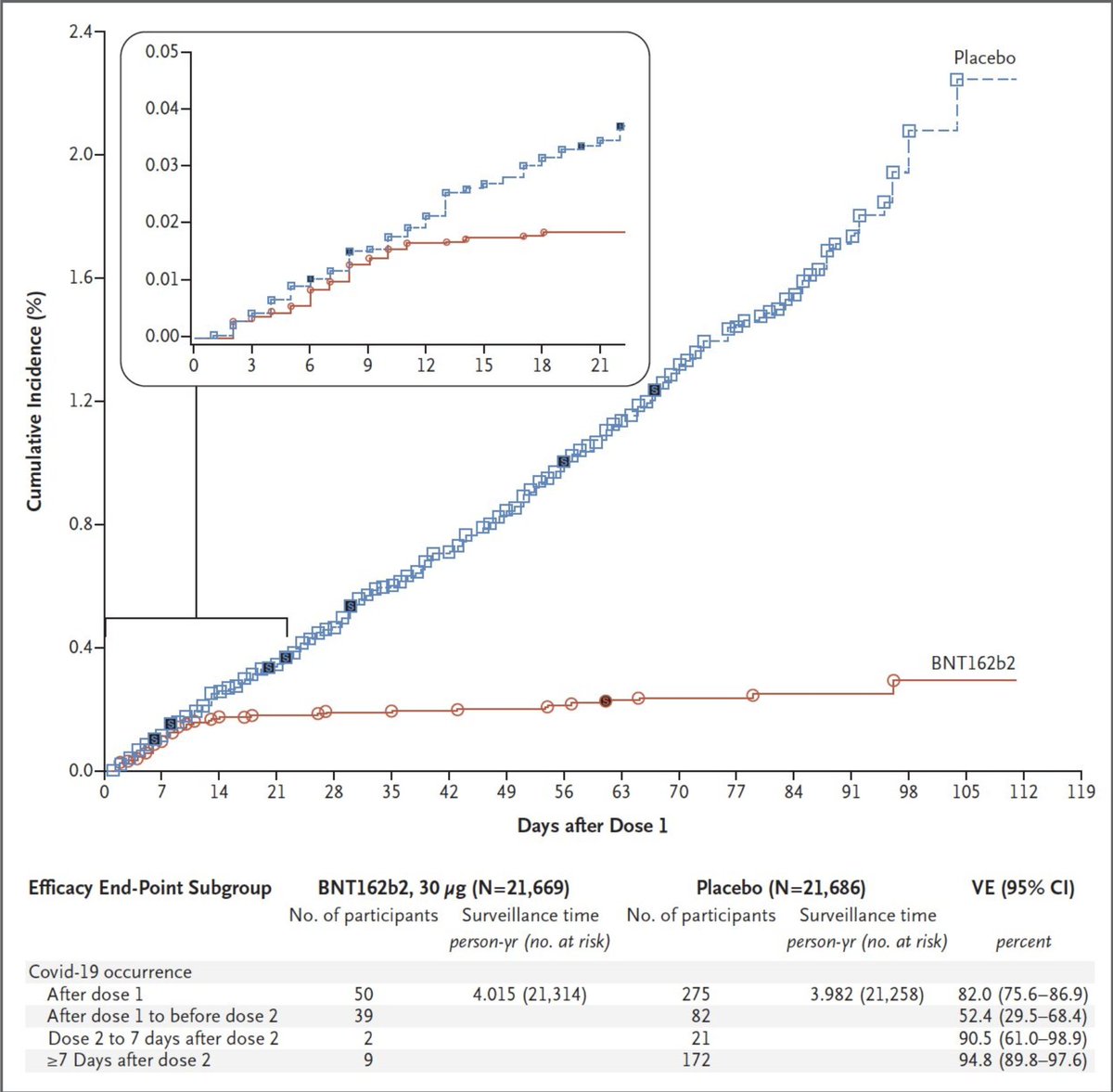
7/ Little doubt that 2 doses is optimal, since overall efficacy after one dose seems to be in the 50-85% range. Two doses gets you to 95%, and also likely to more durable immunity. But this thread by @zeynep captures the pragmatic macro-level question tinyurl.com/y5am4kvs …
8/ …namely, given a vaccine shortage, would a 1-dose regimen (which doubles amount of available vaccine) have a positive tradeoff at a societal level. Nobody’s done a detailed risk-benefit analysis or the relevant studies to answer question of 1 dose vs. 2, but it's obvious…
9/ …that 1 dose would allow more people to be vaccinated sooner, at the price of some loss of efficacy. For now, we should embrace the 2-dose regimen (which is what the FDA will approve); personally, I want 2 doses when it's my turn. But this deserves a detailed analysis, ASAP.
10/ Most striking @moderna_tx data was 30/30 severe cases were in placebo pts. Pfizer had 1 “severe” case in vaccine group (9 in placebo) – it was a pt w/ minor dip in oxygen – a clinical nothing-burger. So both vaccines are ~100% effective in preventing truly severe cases – wow.
11/ Let’s turn to distribution. The fact that @UCSFHospitals – a huge, highly competent system – is scrambling to figure out how to vaccinate its own (~12,000) employees makes clear how hard this is going to be to vaccinate everyone, such as residents of rural nursing homes, …
12/ …or how CVS will sort out if someone’s an essential worker or has a co-morbidity that merits early vaccination. I’ve gotten a few emails from SF MDs (not affiliated w/ UCSF) asking how they’ll get their shots. Answer: nobody knows. Thousands of such details to be worked out.
13/ There’s new and semi-conflicting data on vaccine hesitancy. On the one hand, a new @AP poll – taken after the positive news on vaccines – showed that only 47% of people were sure they’d be vaccinated; concerning tinyurl.com/y5am4kvs On other hand, new @axios-@Ipsos poll…
14/ … tinyurl.com/ya4tbtpk found, while only 51% said they were likely to take the vaccine on day 1, 70% would take it if the vaccine is “proven safe and effective by public health officials.” I’m hoping this FDA process crosses that proof bar; it certainly does for me.
15/ I’m less worried than some people are re: vaccine uptake, mostly because we won’t have enough for 3-6 months. If some people are skeptical and prefer to wait, plenty of others will take their spot. Over time, I think many vaccine skeptics will come around after they see…
16/…their friends get shots, do ok, & feel less anxious about living life. Many will want to wait a few months, which would sync up nicely w/ timing when we're likely to have enough vaccine to go around. Of course, we’ll have to guard against overreacting to every side effect…
17/ … As I showed last wk, thousands of people will have heart attacks, strokes, and new diagnoses of cancer within months after receiving a perfectly safe vaccine. These will be coincidences. It will take vigorous public education to counter concerns that arise from such cases.
18/ One hiccup: on UK's 1st day of vaccination, 2 folks w/ histories of severe allergies had anaphylactic reactions to Pfizer vaccine. Both did OK w/ treatment. UK quickly declared that people w/ history of severe allergies should defer vaccination. Probably right call for now…
19/ …but let’s be sure before we forever exclude such people from vaccination. As @DrPaulOffit said at today’s FDA hearing, tens of millions of Americans carry EpiPens, so such a rule, if permanent, would exclude tons of people from vaccine. For more, see below from @statnews... 

20/ We also need to be prepared to hear many tales of bad days after vaccinations (arm pain, fever, etc) – particularly in younger folks after 2nd dose. Quips Offit: “[These side effects] mean you’re having a vigorous immune response...The immune response needs a better PR team.”
21/ As vaccine rollout begins, second guessing re: why there’s a shortage will grow. Today’s @nytimes The Daily tinyurl.com/y5f2w2r5 discussed how Op Warp Speed turned down chance to buy tens of millions of doses of Pfizer vaccine. I’m mildly sympathetic: OWS got a lot right…
22/ …, and if OWS had spent another few billion bucks buying a vaccine that proved to be a dud, we’d be talking about THAT scandal. But in retrospect, it was a bad error & will markedly slow down the roll-out. Hopefully other vaccines will fill the gap, but it’s not so simple….
23/ … since next up after the @moderna_tx vaccine (which should be approved next week) is @AstraZeneca vaccine. Though once felt to be the leading contender, it now appears to have a lower (~70%) efficacy, and its rollout has been surprisingly gaffe-prone tinyurl.com/yxqlrymn
24/ While the challenging rollout, OWS's Pfizer buy, & the AstraZ glitches all raise concerns, let's keep them in perspective. In the face of a raging pandemic that’s killing 3,000/d, and a U.S. death toll that will soon equal the population of Pittsburgh, we now have vaccines...
25/…that are safe & remarkably effective. The next phase will be bumpy, and we’ll undoubtedly make more errors and have to make mid-course adjustments. But the evidence is easily good enough to begin vaccinating the U.S. population, just as fast as we can. So let’s get started!
• • •
Missing some Tweet in this thread? You can try to
force a refresh

